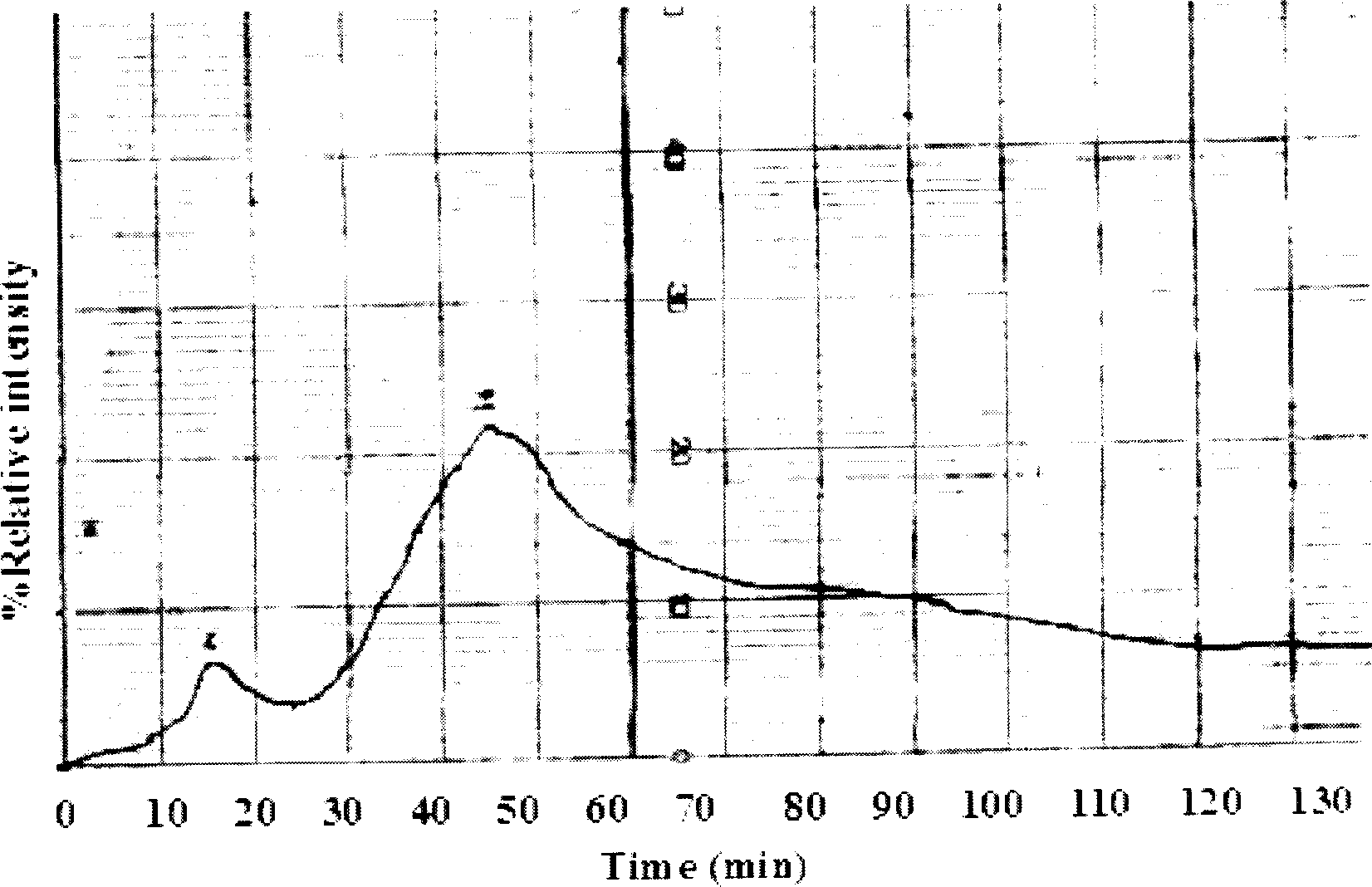Separation and purification of protein BS2 resisting cotton blight and verticillium wilt and cloning of BS2 gene
A cotton fusarium wilt and fusarium wilt resistance technology, applied in the direction of genetic engineering, plant genetic improvement, chemical instruments and methods, etc., to achieve the effect of improving crop yield and quality
- Summary
- Abstract
- Description
- Claims
- Application Information
AI Technical Summary
Problems solved by technology
Method used
Image
Examples
Embodiment 1
[0025] The separation and purification of embodiment 1 antimicrobial protein BS2
[0026] 1 Cultivation of Bacillus subtilis B111 and treatment of fermentation broth
[0027] Inoculate Bacillus subtilis B111 into sterilized LB medium (yeast powder 5g / l, acid hydrolyzed casein 25g / l, NaCl10g / l, pH 7.0), culture at 37°C, 250rmp for 24h, and the antagonistic bacteria Place the B111 fermentation broth in a centrifuge bottle, centrifuge at 12,000 rpm for 20 minutes at 4°C, discard the precipitate, and keep the supernatant.
[0028] Isolation and Purification of Body I2 Antibacterial Protein BS2
[0029] The supernatant of the Bacillus subtilis B111 fermentation broth was concentrated by using an ultrafilter with a molecular cutoff of 20KD. Weigh a certain amount of ammonium sulfate according to the volume of the fermented liquid after concentration (the final concentration of salt reaches 90%). Before adding, the ammonium sulfate must be ground into powder with a mortar, and slow...
Embodiment 2
[0030]Embodiment 2 antibacterial activity identification
[0031] 1 Cultivation of deciduous cotton Verticillium dahliae V991:
[0032] Take an appropriate amount of V991 on the slant and place it in 200ul of sterile water to make a spore suspension and spread it evenly on the Czapek's plate medium, and culture it at 28°C for 5 days. Add 10ml of sterile water to the plate, mix well and add the high concentration spore suspension to 100ml of sterile water to make OD 595 =0.795 spore suspension, divided into 1ml per tube and stored at 4°C for later use.
[0033] 2 Detection of antibacterial activity
[0034] Take 200 μl prepared V991 spore suspension and spread evenly on Czapek’s (KNO 3 1.36g / L, NaCl 1.38g / L, KH 2 PO 4 lg / L, FeSO 4 0.02g / L, sucrose 30g / L, agar powder 15g / L) plate culture dish (diameter 90cm), and Oxford cups were placed equidistantly in the plate, 100μl protein sample was added to each Oxford cup, and 100μl buffer was added to the control group. solution ...
Embodiment 3
[0035] Identification of embodiment 3 antibacterial protein BS2
[0036] The molecular weight of BS2 protein and its peptide fingerprint (PFM) were determined by MALDI-TOF-MS ( Figure 4 , 5 ). The measured molecular weight of BS2 was 32048.979 Da. At the same time, the amino acid sequences (Table 1) of the five polypeptides of the BS2 protein were obtained by using on-line reversed-phase capillary column liquid chromatography electrospray tandem mass spectrometry CapLC-ESI-MS-MS, and Mascot was used to obtain meaningful searches in the secondary mass spectrum library, the results This protein was shown to have homology to two proteins (Bacillus amylolyticus neutral protease precursor HYBSN gi|67706 and Bacillus B16 neutral protease precursor bael6 AAV30844 gi|54126578)
[0037] These two homologous proteins both belong to bacillus neutral protease, and the homology between the two homologous proteins is as high as 89%. At the same time, the amino acid sequences of the fiv...
PUM
 Login to View More
Login to View More Abstract
Description
Claims
Application Information
 Login to View More
Login to View More - R&D
- Intellectual Property
- Life Sciences
- Materials
- Tech Scout
- Unparalleled Data Quality
- Higher Quality Content
- 60% Fewer Hallucinations
Browse by: Latest US Patents, China's latest patents, Technical Efficacy Thesaurus, Application Domain, Technology Topic, Popular Technical Reports.
© 2025 PatSnap. All rights reserved.Legal|Privacy policy|Modern Slavery Act Transparency Statement|Sitemap|About US| Contact US: help@patsnap.com



